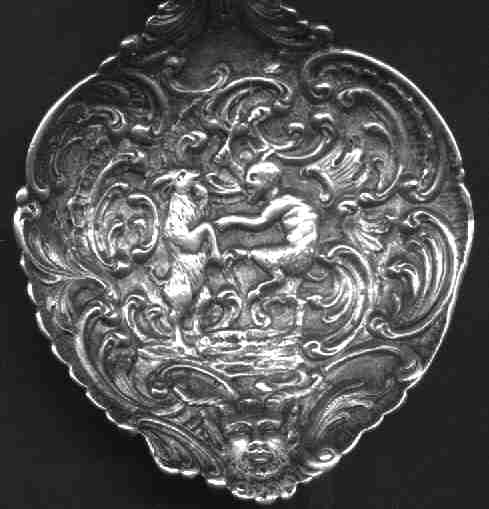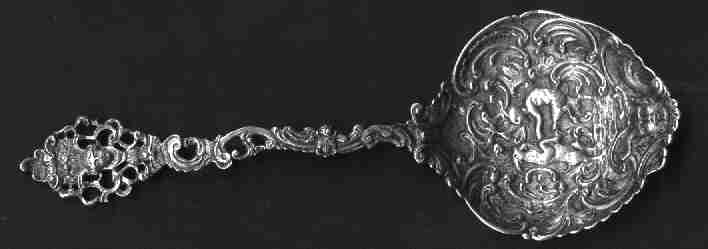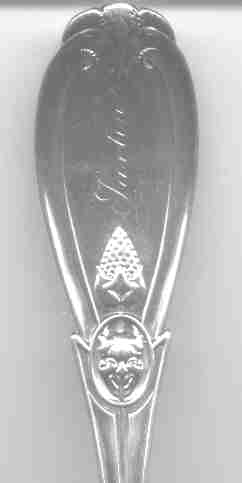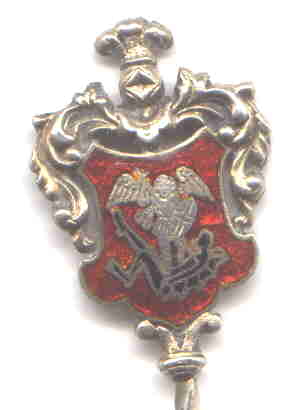Representations of the Devil on silver are rare, as might be expected.

The bowl on this spoon shows the Devil with a goat and another view at the bottom
This representation of the God Pan, who was half man and half goat was extensively worshipped in the ancient European world. The devil was believed to be able to transform into a goat at will, and is usually portrayed in paintings to have cloven hoofs and goat horns.
Somehow, the hair and hoof of the goat became a talisman for protection from the devil, thus goats were lovingly nourished and well kept. Sailors once strongly believed that a goat skin would ensure a calm sea if hung from the mainmast.
To cure sickness in a house, people in parts of Europe and America believed that if a goat could be encouraged to munch its way through the grass on the property where the sick person lived the munching would eventually lead to the illness being taken away.

This 6.8" cast spoon features an art nuevo handle. The bowl shape and style is very similar to other spoons manufactured in the early 1890's, thus I believe that this spoon is from that time period. It is marked 800 and Germany with several other smaller marks.


This large table spoon was patented in 1862. At the top is a ram's head and the horns are also carried over to the back. In the center is this picture of the devil with the tongue sticking out and it is carried all the way to the bowl

Enameled and engraved version of St. Michael slaying the Devil.
In 1455 a gilded statue of St. Michael slaying the devil was put on top of the Brussels town hall tower. The original statue remained on the tower for 541 years until it was replaced in June 1996.
The round bowl is embossed with a picture of the "Hotel de Ville"